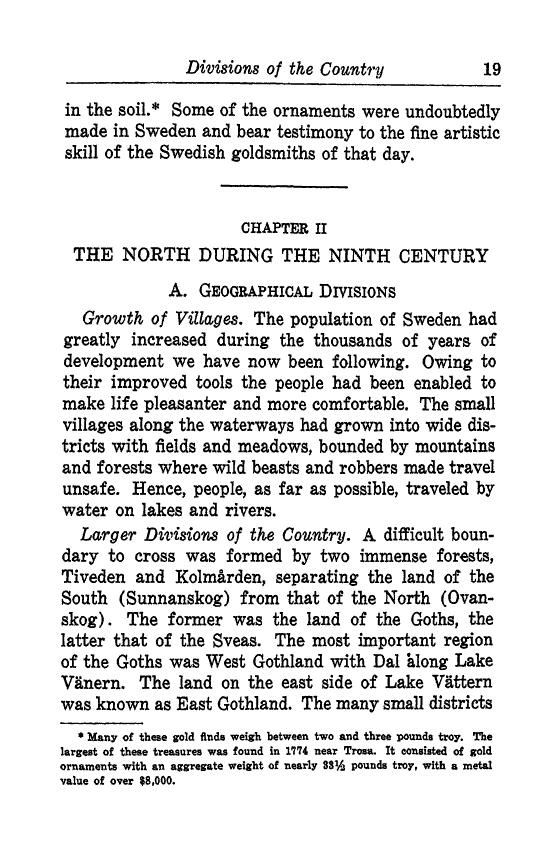
Full resolution (TIFF) - On this page / på denna sida - I. Prehistoric Times - C. The Iron Age - II. The North during the Ninth Century - A. Geographical Divisions

<< prev. page << föreg. sida << >> nästa sida >> next page >>
Below is the raw OCR text
from the above scanned image.
Do you see an error? Proofread the page now!
Här nedan syns maskintolkade texten från faksimilbilden ovan.
Ser du något fel? Korrekturläs sidan nu!
This page has never been proofread. / Denna sida har aldrig korrekturlästs.
Divisions of the Country 19
in the soil.* Some of the ornaments were undoubtedly
made in Sweden and bear testimony to the fine artistic
skill of the Swedish goldsmiths of that day.
CHAPTER II
THE NORTH DURING THE NINTH CENTURY
A. GEOGRAPHICAL DIVISIONS
Growth of Villages. The population of Sweden had
greatly increased during the thousands of years of
development we have now been following. Owing to
their improved tools the people had been enabled to
make life pleasanter and more comfortable. The small
villages along the waterways had grown into wide dis-
tricts with fields and meadows, bounded by mountains
and forests where wild beasts and robbers made travel
unsafe. Hence, people, as far as possible, traveled by
water on lakes and rivers.
Larger Divisions of the Country. A difficult boun-
dary to cross was formed by two immense forests,
Tiveden and Kolmarden, separating the land of the
South (Sunnanskog) from that of the North (Ovan-
skog). The former was the land of the Goths, the
latter that of the Sveas. The most important region
of the Goths was West Gothland with Dal along Lake
Vanern. The land on the east side of Lake Vattern
was known as East Gothland. The many small districts
<< prev. page << föreg. sida << >> nästa sida >> next page >>